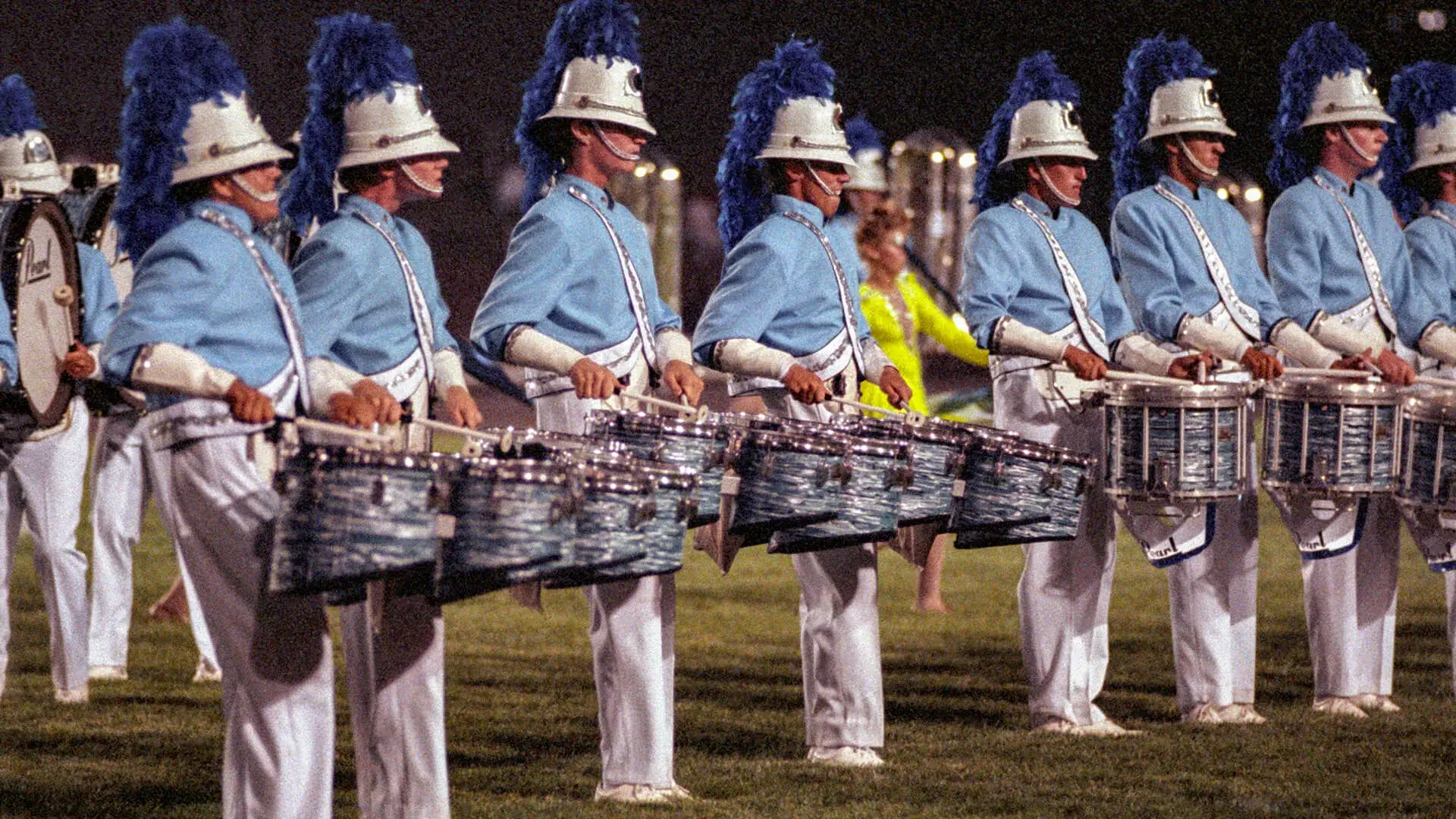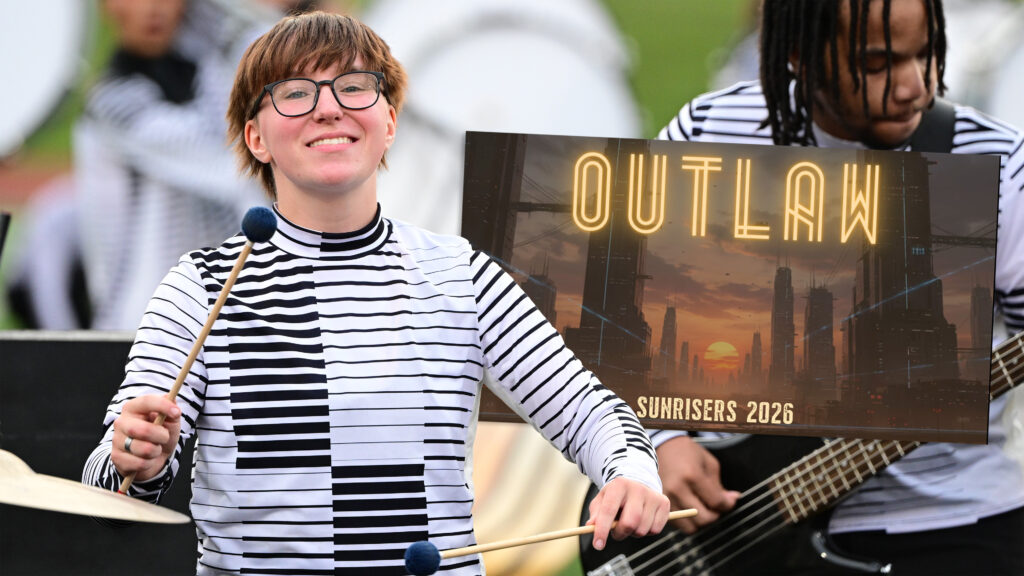The 1991 Drum Corps International season was a banner one for Midwestern corps, as all top-three corps at the DCI World Championships at the Cotton Bowl Stadium in Dallas hailed from the region.
To drive that point home, all three of those corps—Star of Indiana, The Cavaliers, and Phantom Regiment—tied each other on the judges’ sheets in the general effect caption. Interestingly, in winning the title, Star of Indiana didn’t capture a single caption outright, also tying Cavaliers and Santa Clara Vanguard in visual and Blue Devils in brass.
Notably, Finals night offered the first appearance of the Blue Knights in the big show, but three corps that made the top 12 in 1990 didn’t repeat in 1991; Velvet Knights, Spirit of Atlanta and Dutch Boy. The sixth time in Finals for the Sky Ryders would be the corps’ last.

With an 11th-place finish, 1991 marked the fifth year that the Bluecoats advanced into the Finals competition. Color guard members sporting big hair representative of the time period started the show in neon yellow bodysuits that jumped right into the corneas of the audience members and were about as much a contrast as possible with the pale blue tops of the members of the horn line and percussion section.
Bluecoats opened the production with an arrangement of Horace Silver’s “Nutville,” based on the arrangement for Buddy Rich’s “The Roar of ’74 album.” The Ohio corps’ arrangement featured a variety of high-note-playing soprano bugle soloists, which was quite common for the Bluecoats of that era.

The corps next turned to “Palookaville,” an original swing composition written by staff member Larry Kerchner, a prolific drum corps arranger for groups such as the Muchachos, Bridgemen, Sky Ryders, Crossmen and Star of Indiana. The term “palooka” was originally used in the 1920s in reference to prizefighters and was popularized by the same writer for “Variety” who also coined the term “baloney” to describe something in a negative light.
The piece opened with a cool and restrained mallet feature in the front ensemble percussion section, leading into a short blast of brass before heading back into the realm of being too cool for the room. As part of that persona, one corps member walked past the soprano bugle soloist and very briefly stuck his hand in front of the horn bell of the other, acting as a very brief human mute. The end of the first part of the work seemed to have a distinctive stylistic reference to “Harlem Nocturne,” a work Kerchner had arranged for the Bridgemen in 1978.
The second part of “Palookaville” was introduced by a drum break, leading into a color guard sequence that travelled across the field from left to right and a mallet segue featuring percussionists performing from both the front and back of two marimbas.
The corps turned to British rock band Procol Harum’s ballad, “A Whiter Shade of Pale,” for the closing tune. The piece is often considered one of the anthems of the 1967 “Summer of Love,” a time when tens of thousands of free spirits descended upon the counter-culture Eden of the corner of Haight and Ashbury Streets in San Francisco. The piece was off the band’s debut album of the same name and was inspired by the late 19th Century arrangement by violist August Wilhelmj of a movement from JS Bach’s “Orchestral Suite. No. 3.”

At this point the color guard performers went behind large stage sets in the shape of fans to remove their bright yellow costumes, coming out with purple-hued evening gowns that transitioned into white halfway down the long skirts.
After the sound of a blaring siren indicative of the skirmishes between anti-Vietnam War protesters and police and the National Guard, drummers took off their instruments and formed a peace sign. Soon, the entire horn and drum lines formed a giant peace sign, leading into a quick change of tempo, more blaring of the siren, and a statement of The Beatles’ “Hey Jude.”
A company front push of the melody of “A Whiter Shade of Pale” closed out the show as 25 huge white banners sailed across the field.
1991 Overview

Michael Boo was a member of the Cavaliers from 1975-1977. He wrote about the drum corps activity for more than 35 years while serving as a staff writer for various Drum Corps International projects. During his lifetime Boo wrote for numerous other publications including an honors-winning book on the history of figure skating. He also was an accomplished composer. Boo passed away in 2020 and was inducted into the DCI Hall of Fame posthumously in 2021.





